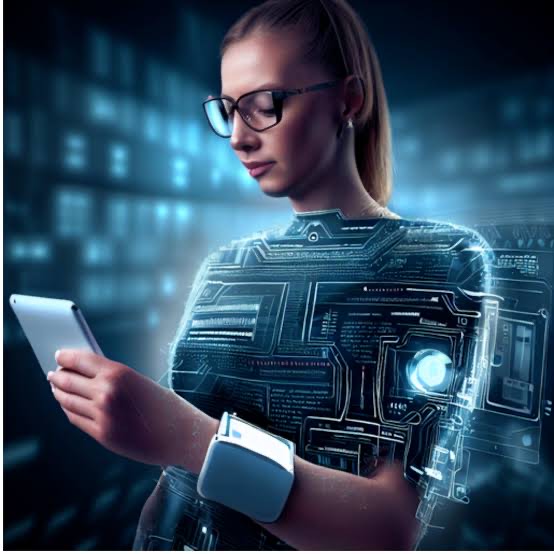I. Introduction to Character Generation AI
Character Generation AIgaming
A. Understanding the Concept of Character Generation AI
Character generation AI refers to the use of artificial intelligence and machine learning algorithms to generate and design virtual characters that possess distinct features, personalities, and appearances. Rather than relying solely on human creativity and design, character generation AI aims to automate and accelerate the character creation process. By analyzing vast amounts of data, including text, images, and audio, the AI models are capable of learning and generating characters that meet specific requirements.
B. Evolution and Advancements in Character Generation AI Technology
Over the years, character generation AI technology has undergone remarkable advancements. Initially, character generation relied heavily on human design expertise and manual labor. However, with the advent of AI, the approach shifted towards data-driven techniques. The utilization of deep learning algorithms, such as Generative Adversarial Networks (GANs) and Recurrent Neural Networks (RNNs), paved the way for more realistic and diverse character generation.
C. Significance of Character Generation in Various Industries
Character generation AI holds immense significance across multiple industries. In the entertainment and gaming sector, it enables the creation of unique and memorable game characters, enhancing player immersion and engagement. Moreover, it simplifies the process of designing in-game non-player characters (NPCs) and generating customizable avatars for virtual worlds. Similarly, the film and animation industry benefits from character generation AI by automating background character creation, simplifying crowd scenes and extras, and accelerating concept art development. Furthermore, virtual assistants and chatbots can be enriched by generating diverse and relatable conversational agents, personalizing chatbot interactions, and overcoming biases in automated responses.
II. The Process of Character Generation AI
Character generation AI involves a comprehensive process, starting from data collection and analysis to designing and training the character generation models. Let’s delve into each step in detail.
A. Data Collection and Analysis for Character Generation Models
- Utilizing Databases and Open-source Resources
To build robust character generation models, data collection is crucial. AI engineers leverage databases, open-source resources, and even user-generated content to compile a diverse pool of data. These datasets include attributes like facial features, body proportions, clothing styles, and personality traits.
- Data Preprocessing Techniques
Once the data is collected, preprocessing techniques are applied to clean and standardize the data. This involves removing duplicates, normalizing data formats, and handling missing values. Data anonymization techniques are also employed to ensure user privacy and consent.
- Analyzing Data to Extract Relevant Features
After preprocessing, the data is analyzed to extract relevant features. Machine learning algorithms are employed to identify patterns and correlations within the data, allowing the AI models to learn and generate characters that showcase desired attributes and characteristics.
B. Designing and Training Character Generation Models
- Selecting Appropriate Machine Learning Algorithms
Designing the character generation models requires selecting the appropriate machine learning algorithms. GANs, RNNs, and Variational Autoencoders (VAEs) are commonly utilized algorithms that facilitate the generation of diverse and realistic characters.
- Optimizing Model Architecture
Optimizing the model architecture plays a vital role in enhancing the quality and diversity of generated characters. Techniques such as architecture modifications, regularization, and hyperparameter tuning are employed to ensure the models generate desirable outputs.
- Implementing Training and Validation Procedures
To train the character generation models, extensive datasets are used. These datasets are divided into training and validation sets. During the training process, the models learn to generate characters based on the input data. Simultaneously, the validation sets are used to evaluate and optimize the model’s performance.
C. Evaluating and Refining Generated Characters
- Assessment Criteria for Measuring Character Quality
Evaluating the quality of generated characters is crucial to ensure desirable outcomes. Assessment criteria are established, which may include factors like uniqueness, visual appeal, and adherence to specific design guidelines. Human evaluators or automated metrics can be employed to assess the generated characters.
- Iterative Feedback Loop for Model Improvement
Based on the evaluation results, an iterative feedback loop is established to refine the character generation models. The models are continually updated and fine-tuned to improve the quality, diversity, and accuracy of the generated characters.
- Incorporating User Preferences in Character Generation
To ensure user satisfaction, user preferences and feedback play a crucial role. User feedback is collected and incorporated into the training process, allowing the models to generate characters that align with user expectations and preferences.
III. Applications of Character Generation AI
Character generation AI finds applications in various industries, transforming the way characters are created and utilized. Let’s explore the applications in the entertainment and gaming industry, film and animation, as well as virtual assistants and chatbots.
A. Entertainment and Gaming Industry
- Creating Unique and Memorable Game Characters
Character generation AI revolutionizes the creation of game characters, enabling game developers to generate a vast array of unique and memorable characters that offer immersive gameplay experiences.
- Enhancing In-game Non-player Characters (NPCs)
Utilizing character generation AI, game developers can enhance the visual appeal and diversity of in-game non-player characters (NPCs), making the game world more vibrant and realistic.
- Generating Customizable Avatars for Virtual Worlds
Character generation AI facilitates the creation of customizable avatars for virtual worlds and online gaming platforms. Users can customize their avatars’ appearance, clothing, and even personalities, enhancing personalization and self-expression.
B. Film and Animation Industry
- Automating Background Character Creation
Character generation AI automates the process of creating background characters in films and animations, saving time and resources. This technology assists in populating scenes with diverse characters that suit specific requirements.
- Simplifying Crowd Scenes and Extras
Generating characters for crowd scenes and extras becomes more efficient and cost-effective through character generation AI. The models can quickly generate a diverse range of characters to populate large-scale scenes.
- Accelerating Concept Art Development
Concept art development typically involves sketching and visualizing characters. With character generation AI, the initial stages of concept art development can be expedited by generating various character designs for inspiration.
C. Virtual Assistants and Chatbots
- Generating Diverse and Relatable Conversational Agents
Virtual assistants and chatbots benefit from character generation AI by generating diverse and relatable conversational agents. These agents can possess distinct personalities, speech patterns, and visual representations, enhancing user engagement and satisfaction.
- Personalizing Chatbot Interactions for Users
Character generation AI allows for personalized chatbot interactions by generating characters that align with user preferences and contextual requirements. This personalization enhances the user experience and fosters more meaningful interactions.
- Overcoming Bias in Automated Responses
Character generation AI tackles bias in automated responses by generating characters that avoid stereotypes and display inclusivity. Additionally, ongoing monitoring and fine-tuning ensure the generated responses align with ethical guidelines.
IV. Ethical Considerations in Character Generation AI
While character generation AI brings numerous benefits, it also raises ethical considerations that must be addressed to ensure fairness, inclusivity, privacy, and legality.
A. Ensuring Diversity and Inclusion
- Avoiding Stereotypes and Biases in Generated Characters
To ensure diversity and inclusivity, character generation AI models must be trained on diverse datasets, avoiding biases and stereotypes. Careful attention should be given to cultural, gender, and racial representations to promote fair and respectful character design.
- Addressing Underrepresentation in Character Design
Character generation AI can address underrepresentation by actively incorporating diverse attributes and features in the generated characters. This includes ensuring representation of different ethnicities, body types, abilities, and gender identities.
- Promoting Cultural Sensitivity and Respect
Cultural sensitivity and respect are crucial in character generation AI. Models should be trained to understand, respect, and accurately depict cultural nuances and differences to avoid perpetuating cultural stereotypes.
B. Privacy and Data Protection
- Safeguarding User Data Used for Character Generation
Personal user data used for character generation must be handled with utmost care. Stringent security measures, encryption techniques, and data anonymization protocols should be in place to safeguard user privacy and protect sensitive information.
- Transparency in Data Collection and Usage
Users must be provided with clear information about data collection and usage for character generation AI. Transparency in terms of consent, data storage, and usage purposes is essential to build trust and ensure ethical practices.
- Mitigating Concerns over Implicit Profiling
Character generation AI must prioritize mitigating concerns over implicit profiling. Data collection should adhere to relevant privacy laws and regulations, and users’ consent must be sought to avoid any unintended consequences related to profiling or discrimination.
C. Legal and Copyright Challenges
- Intellectual Property Rights of Generated Characters
Generated characters may raise legal questions regarding intellectual property rights. Clear guidelines should be established to address ownership, usage rights, and licensing of the characters to avoid potential copyright disputes.
- Assessing Potential Copyright Infringement
To mitigate copyright infringement, character generation AI models should be trained to generate original characters that do not infringe upon existing copyrights. Regular monitoring and compliance processes should be implemented to ensure legal and ethical character generation.
- Establishing Clear Usage Rights and Licensing
Character generation AI should incorporate mechanisms to establish clear usage rights and licensing agreements for generated characters. This ensures clarity and prevents unauthorized use or reproduction of characters, protecting the interests of both creators and users.
V. Summary
Character generation AI has emerged as a game-changer in industries such as gaming, film, animation, and virtual assistants. By leveraging machine learning algorithms and vast datasets, character generation AI offers numerous benefits in terms of creativity, efficiency, and user engagement. However, it also raises ethical considerations that require thoughtful approaches to ensure fairness, inclusivity, privacy, and the protection of intellectual property rights. The potential and advancements in character generation AI are promising, but it is essential to acknowledge the challenges ahead and work towards establishing ethical guidelines and regulations.
VI. FAQs (Frequently Asked Questions)
A. How does Character Generation AI differ from traditional character design methods?
Character generation AI differs from traditional character design methods by automating the creation process through machine learning algorithms. It leverages large datasets and learning patterns to generate diverse and unique characters, providing efficiency and scalability that surpass traditional manual design.
B. Can Character Generation AI completely replace human creativity in character creation?
While character generation AI streamlines and enhances the character creation process, it cannot completely replace human creativity. AI models rely on human input and preferences, and human designers play a crucial role in refining, evaluating, and adding subjective elements to the generated characters.
C. What measures are being taken to ensure fairness and inclusivity in character generation?
To ensure fairness and inclusivity, character generation AI models are trained on diverse datasets, avoiding biases and stereotypes. Ethical guidelines and regulations are being developed to promote cultural sensitivity, address underrepresentation, and avoid perpetuating discriminatory character design.
D. How can users provide feedback for enhancing the quality of generated characters?
Users can provide feedback through various channels, such as surveys, user testing, or dedicated feedback platforms. Collecting user preferences, suggestions, and critiques can help improve the quality, diversity, and relevance of generated characters.
E. What ethical guidelines and regulations currently exist for Character Generation AI?
While ethical guidelines and regulations for character generation AI are still evolving, existing frameworks like privacy laws, data protection regulations, and intellectual property rights serve as the foundation. Organizations and researchers actively work towards establishing comprehensive ethical guidelines to address fairness, inclusivity, privacy, and legal challenges.










